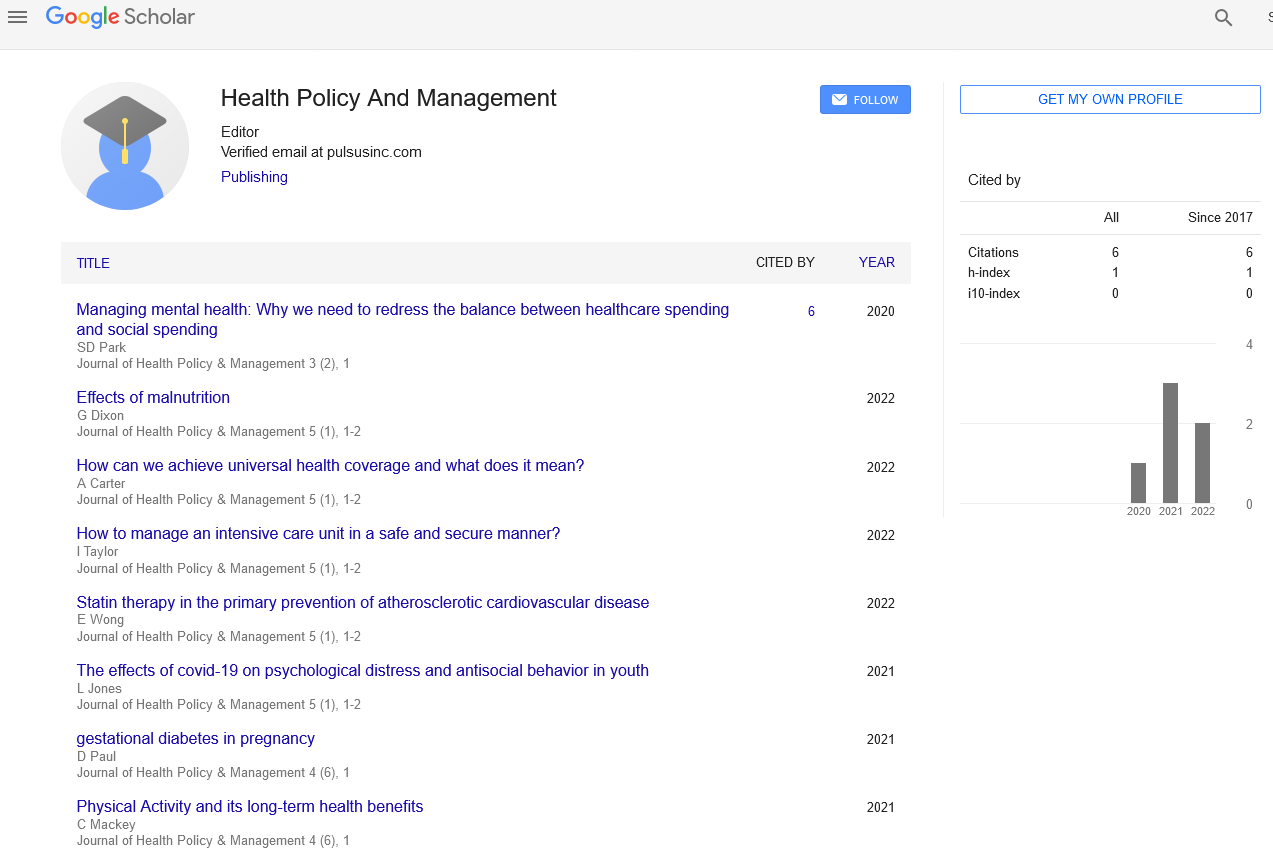myocardial infarction in young adults
Received: 28-Dec-2021 Accepted Date: Jan 10, 2022; Published: 20-Jan-2022
Citation: Iverson M (2021) Myocardial Infarction in Young Adults. J health Policy Mng. 4(6)
This open-access article is distributed under the terms of the Creative Commons Attribution Non-Commercial License (CC BY-NC) (http://creativecommons.org/licenses/by-nc/4.0/), which permits reuse, distribution and reproduction of the article, provided that the original work is properly cited and the reuse is restricted to noncommercial purposes. For commercial reuse, contact reprints@pulsus.com
Introduction
Coronary Heart Disease (CHD) represents the main reason of demise in adults within the western world. Myocardial Infarction (MI) is the deadly manifestation of CHD and might present as unexpected dying. Although MI particularly takes place in patients older than forty five but younger men or girls can go through MI. Fortunately, its occurrence isn't common in sufferers younger than forty five years. However, the disease consists of a huge morbidity, mental effects, and economic constraints for the man or woman and the family when it takes place at a younger age. The protection provided by the younger age has been slowly taken away by the elevated prevalence of threat elements for CHD in teenagers including smoking, obesity, and lack of Physical exercise.
The reasons of MI amongst patients aged much less than forty five may be divided into 4 groups: Athermanous coronary artery disease: The athermanous procedure begins in early childhood. In a necropsy study of 760 younger person sufferers who died of diverse reasons, advanced CHD has been discovered in 20% of men and 8% of girls among the ages of 30 and 34 years of age. The etiology of athermanous CHD has been related to the conventional threat elements as in adults. Among younger sufferers with reported athermanous stage, cigarette smoking has been discovered to be not common in 92%. Lipid abnormalities in particular hypertriglyceridemia and low HDL had been discovered to be more common in sufferers who had their MI aged much less than forty five years. Conventional threat elements play a bigger role in more youthful sufferers who had MI. Apart from these, emergence of novel threat elements for CHD like hyperhomocysteinemia and lipoprotein (a) amongst adults of various age groups might also additionally have the same medical implications in younger people. Premature CHD is a rapid progressive form of athermanous manner. Non-Athermanous coronary artery disease: Congenital coronary artery anomalies can be there for the first time as MI in younger adults. Cases of myocardial bridging, in which the coronary arteries are embedded inside a tunnel within the myocardium underneath a layer of muscles, have also been reported in younger people suffered from MI. Myocardial bridging can bring about significant ischemia in the course of systolic contraction and might bring about MI. Coronary artery dissection can arise spontaneously in younger adults. The chest ache is regularly peculiar and girls are at a higher threat at some stage in their per partum period. The left anterior descending artery has been discovered to be the culprit artery in maximum of the cases. Unfortunately the prognosis is often made at necropsy. Hyper-Coagulable states: Anti phospholipid syndrome is related to recurrent arterial and venous thrombosis. It is often the disease of the youngsters in their 30 s. It may be primary or secondary related to different autoimmune diseases like systemic lupus erythematous. Thrombotic occlusion of a coronary artery can result in acute MI. These sufferers have a tendency to have premature atherosclerosis and elevated platelet adhesiveness. Myocardial Infarction associated with substance misuse: Cocaine use is related to diverse cardiac complications including MI. Among younger sufferers admitted with no traumatic chest ache in the emergency department, cocaine use was discovered to associate with the clinical presentation in 48%. MI was diagnosed, primarily based totally on an increase in cardiac troponins. Cocaine use consequences in acute MI by the mechanisms inclusive of coronary vasospasm and hypercoagulability in the history of heightened sympathetic activity. Longtime consumption of cocaine also has outcomes in hastened atherosclerosis.
Myocardial infarction is more prevailing in people with age much less than 30 years. There can be many reasons, a number of which include – Substance abuse or immoderate alcohol use, Smoking, High blood pressure, High LDL cholesterol levels, Lack of bodily activity, Diabetes and Poor diet.





